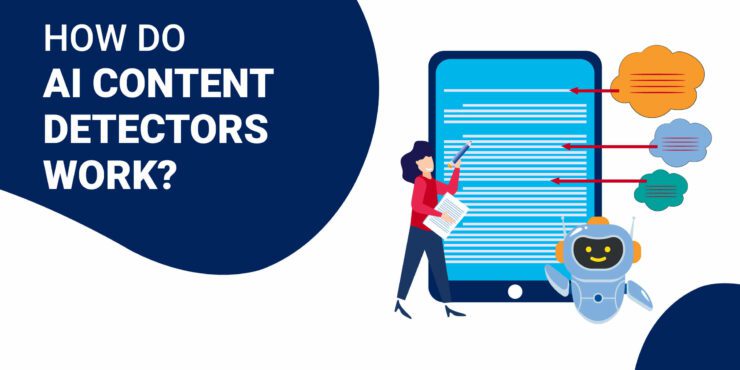As computers get better at writing or creating content, it's becoming more common to see their work online. Yet content that’s 100% created by machines tends not to be as valuable or enjoyable to readers.
Google hasn’t said it will outright punish it, but they have tightened the reins on what they consider “helpful content”, aka what ranks higher.
This is why it's important to have these detectors.
This helps keep things clear and honest online, and in the classroom, making sure that we can trust the information we come across.
Best AI Detector
Best AI Rewriter
- Detector is part of a simple rephrasing tool to quickly pass as human output
- Detects AI by cross-checking 8 other detectors
- Works with ChatGPT, GPT4, Bard, Claude, & More
- Both free & paid versions available
We offer this website completely free to our visitors. To help pay the bills, we’ll often (but not always) set up affiliate relationships with the top providers after selecting our favorites. However, we do our best not to let this impact our choices. There are plenty of high-paying companies we’ve turned down because we didn’t like their product.
An added benefit of our relationships is that we always try to negotiate exclusive discounts for our visitors.
What is AI Detection?
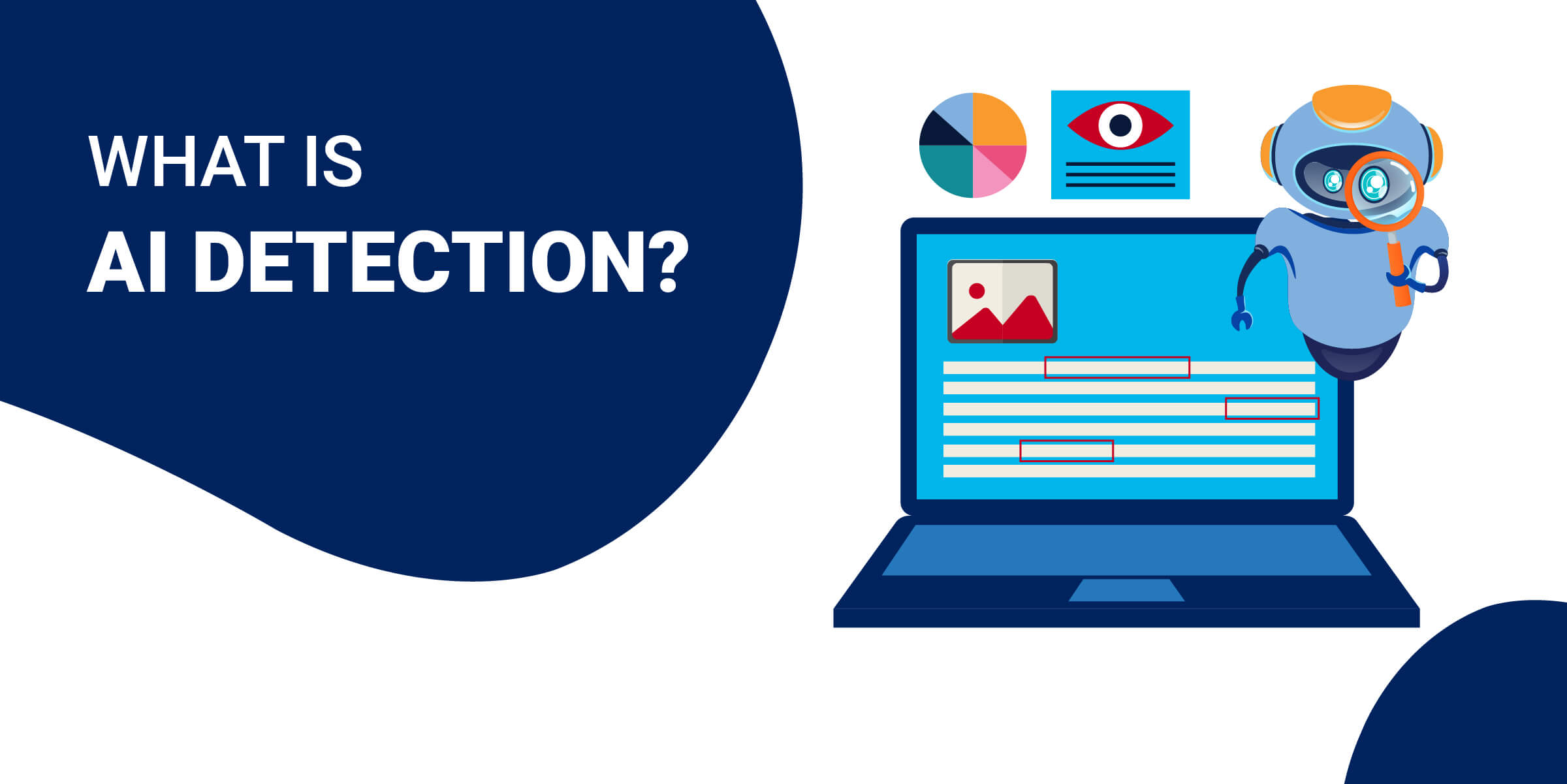

AI detection is about figuring out if a computer or a person made a piece of content, including articles or photos.
Special software looks for clues in the content that might show it's made by AI.
As computers get better at creating things that seem like they were made by humans, it's important to have a way to check the source.
AI detection helps make sure people know where their information or media is coming from. It's especially useful in schools, news, and other areas.
How AI Detectors Evaluate Content
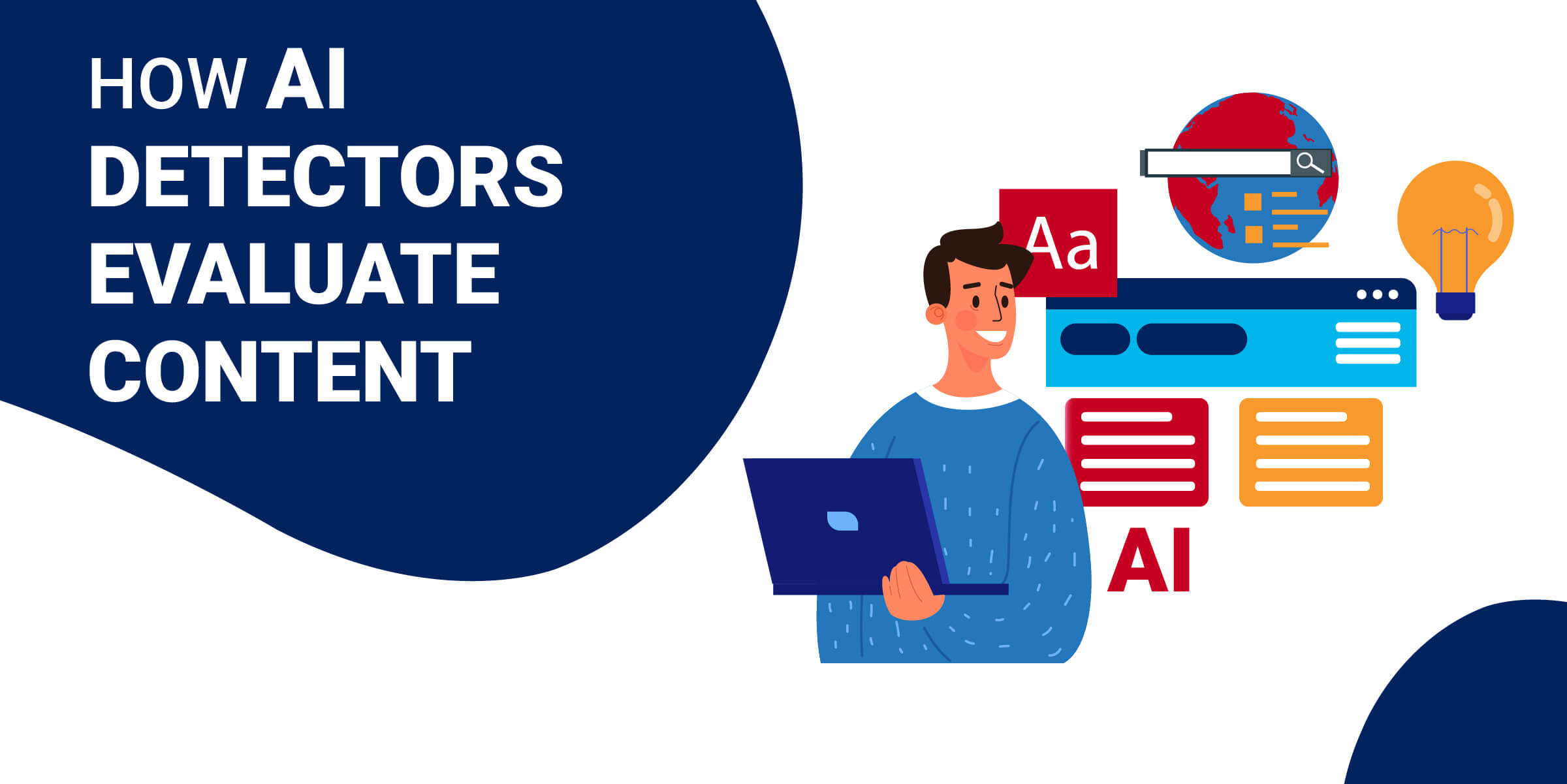

AI detectors use advanced technology to discern if the content was made by humans or AI. They particularly focus on language models for text. Language models are complex algorithms trained on vast amounts of text data to predict the next word in a sentence. They're the backbone of AI content creation and detection.
When AI detectors analyze text, they often look at perplexity and burstiness-two key indicators that can signal AI-generated content.
Perplexity
Low perplexity= greater chance of AI content
If a piece of content has low perplexity, it means the text is very predictable to the model. This is often a sign it might be AI-generated because AI tends to create more predictable and less varied text.
Burstiness
Low burstiness= greater chance of AI text
Burstiness refers to the variability in the length and complexity of sentences.
Human-written text usually shows more burstiness because our writing style varies more than a machine's. AI-generated text tends to be more uniform. It has less variation in sentence structure and length.
Language Model Assessment
AI detectors compare the content to what a language model would generate. They analyze if the text follows patterns too closely aligned with what a model would predict.
By examining these aspects, AI detectors can provide insights into whether content is more likely to have been generated by a human or an AI. They often provide you with a percentage likelihood score.
Are AI Detectors Reliable?


Kind of. They tell you if content reads like AI writing (and to what degree), but that doesn’t necessarily tell you if it was written by AI. Skilled AI users who leverage prompts to reduce predictability can easily bypass AI detection. Simply paraphrasing the AI’s output can also help.
Let’s take a look at an example:
For example, l asked ChatGPT to write 150 words about how important humans are for content writing.
Then, I passed the (unedited) content through Content at Scale’s AI detector (review).
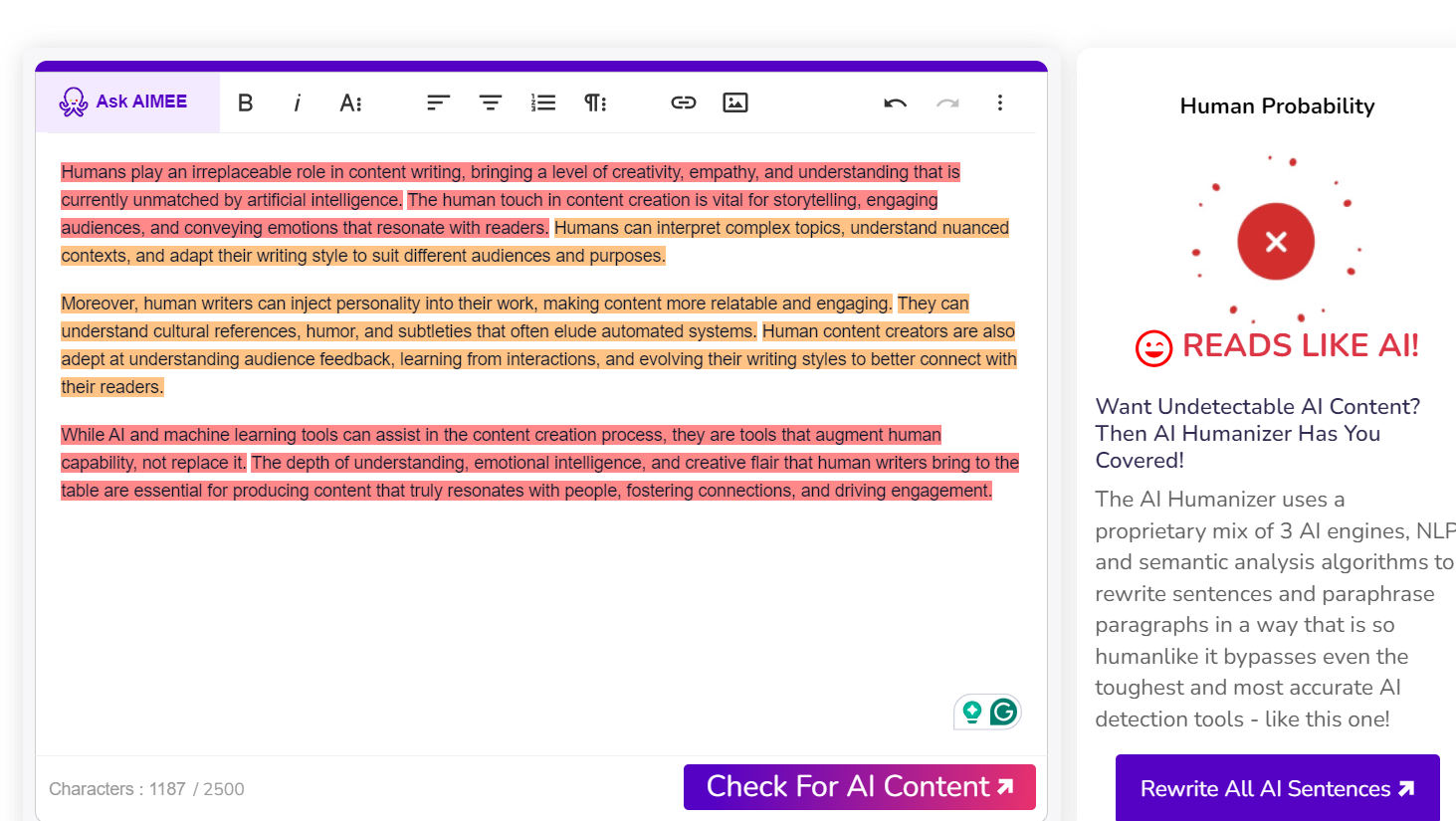

Unsurprisingly, it told me the content read like AI. Additionally, it highlighted the most “AI-y” areas in red. The “still robotic but slightly less” sentences are highlighted in orange. No sentences are unflagged (which is good since they were all AI).
Then, I wrote my own tidbit on the same topic (before even reading what ChatGPT had said). I put this through the same detector.


Overall, it did great. Most of my text was green, and the overall score was “human.” Even so, it marked some of my content as red or orange. Yet it was 100% human-written.
So clearly, this tool is not 100% accurate. Still, it did a fairly good job. Other tools have varying accuracy rates, but ultimately none are terrible and none are perfect. They all give some helpful insight into how content was created, which serves as a good starting point for editing.
P.S. Does all of this talk about human writers have you fired up? Check out our favorite sites to hire freelance writers.
How to Use AI Content Detectors for Your Content
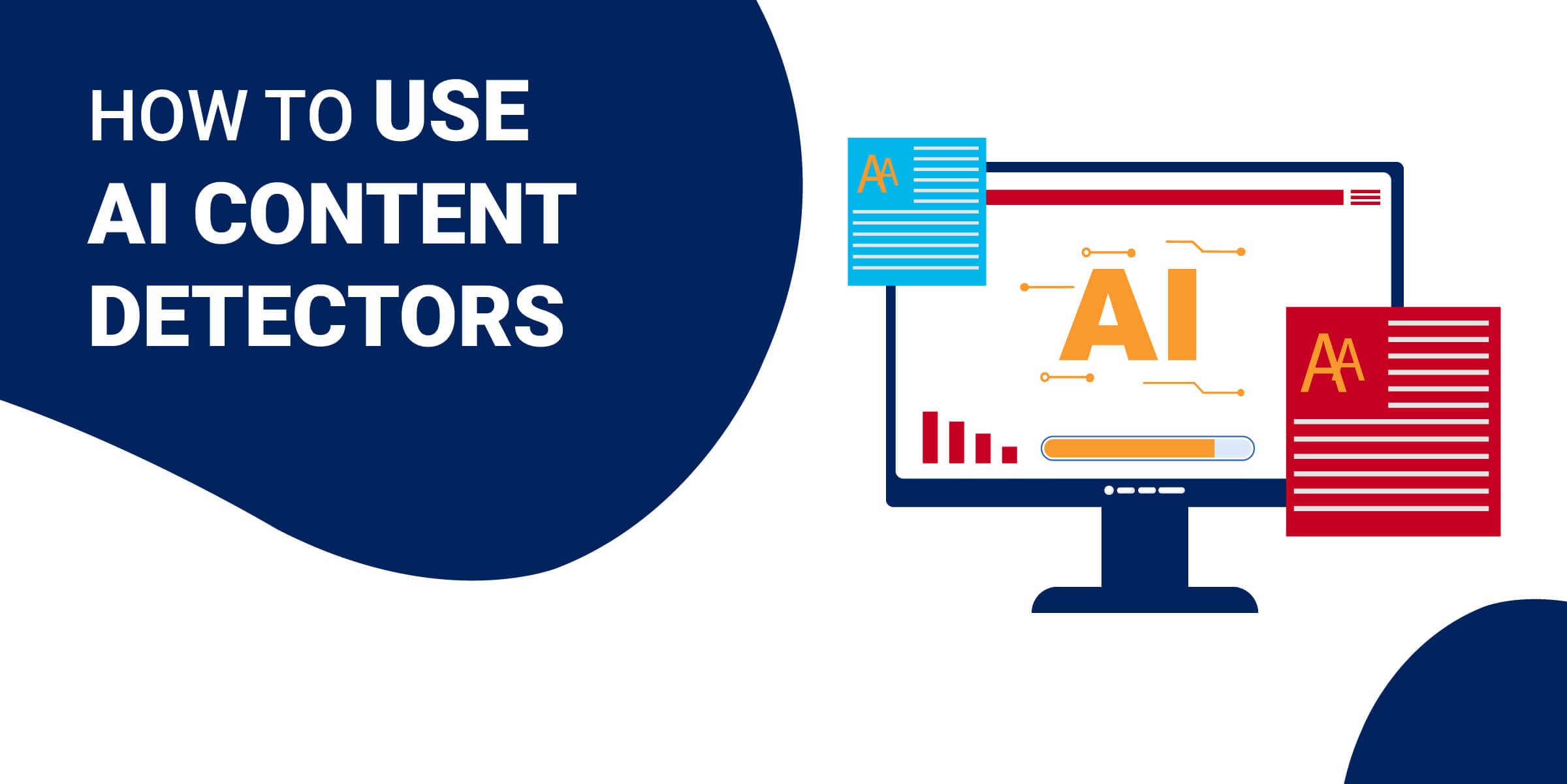

Despite lacking 100% accuracy, content detectors can still be helpful tools.
AI detectors provide several use cases and benefits for a wide array of industries. The most common places include:
- Education– To examine student work and ensure academic honesty. Read this guide to learn how teachers can use AI detection.
- Publishing– If they are focused on publishing human-written content only, like many publications on the site Medium.
- Recruitment– That want to ensure that applicants write their own cover letters.
- Web content creation– Content writers concerned that AI content may rank lower.
Now, since they are fallible, we shouldn’t use these tools to mark someone as a cheater who used AI tools definitively. Still, they can raise red flags for teachers to evaluate further.
Overall, here’s how I often use AI detectors in my role as a content writer:
- To check AI text that I already edited and humanized to ensure it’s reading naturally
- To evaluate my own writing and look for areas to improvement
- To see where text is cumbersome, repetitive, or robotic
- As a tool to evaluate and check new writers
- To check readability when improving and optimizing previously published content
Check out our guide to finding the perfect AI content editor!
Tips for Manually Spotting AI-Generated Text


In addition to AI detectors, you can (and should) use your judgment to evaluate text. There are plenty of obvious tell-tale signs of AI writing. Here’s what to look for (and avoid in your writing):
Overly Formal Language
AI tools write very formal, lacking a conversational tone. For many types of content, the writing tone comes across as stiff and too formal.
Keep an eye out for overly polite language.
Monotonous Tone
AI-generated text lacks the emotional depth and variety of human writing. It maintains a consistent tone throughout, missing the natural shifts in emotion or emphasis that a human writer would naturally include.
If you're reading a story and notice that the excitement, tension, or joy doesn't quite come through in the words, it might be AI-generated.
Predictable Structure
AI follows learned patterns, leading to formulaic text.
if every paragraph follows the exact same pattern and all sentences have similar lengths and structures, then it might be machine-generated.
Lacks Originality
AI can only draw from what it knows, and that’s its data set (and maybe the internet). Therefore, it can’t offer new insights or take unique perspectives.
Look out for pieces that only re-state common knowledge without new insights or articles that use very common examples. These are likely AI-made.
Logical Problems
AI has a funny habit of writing content that contradicts itself. While editing content, I’ve seen the AI writing claim one car maker is more reliable than the other in one section, and then the complete opposite in another area.
Beware of contradictions or disjointed arguments. They signal AI writing.
Plagiarism Checker vs AI Detector
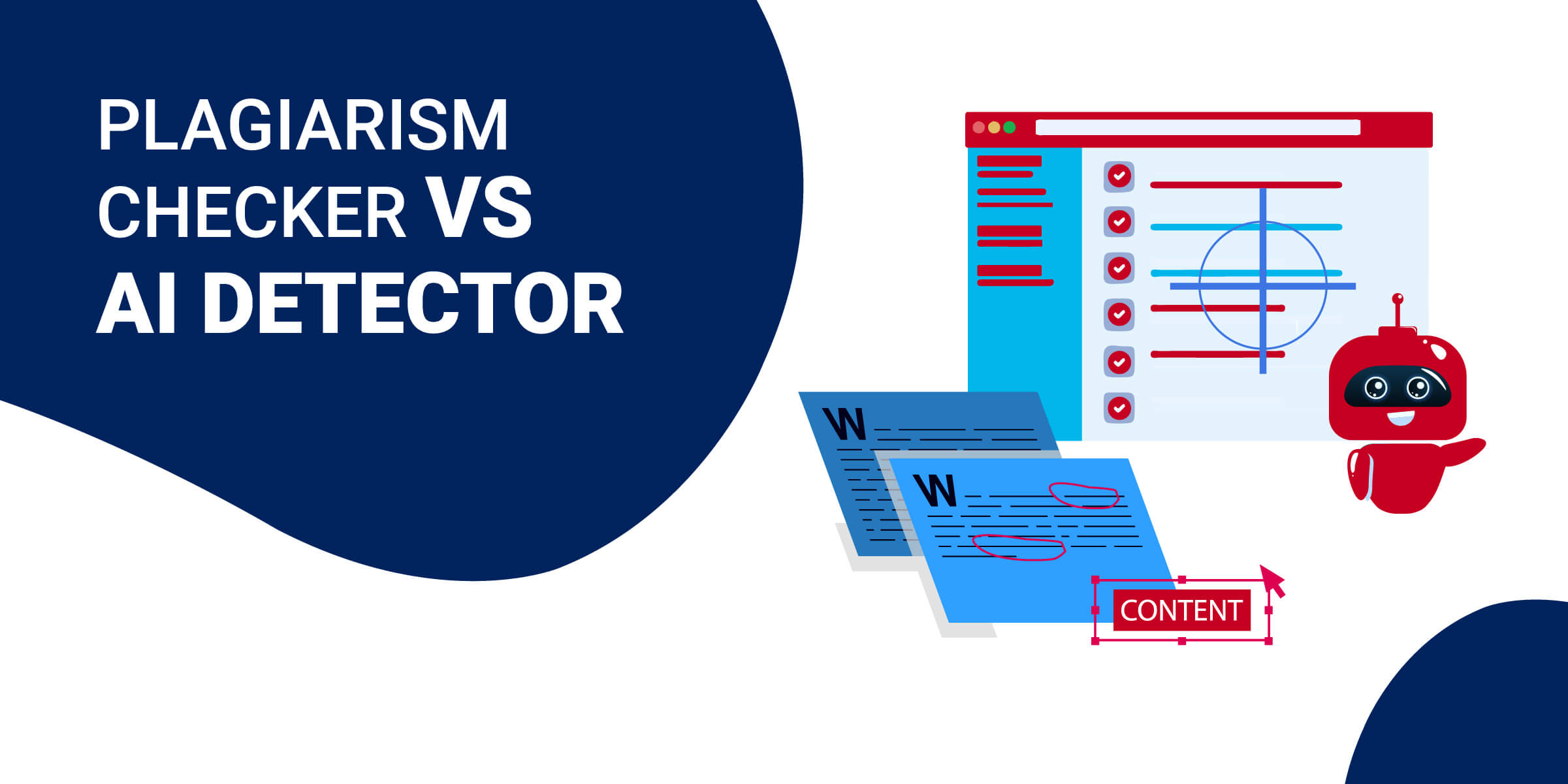

Educational institutions may use both AI detectors and plagiarism checkers, but they are two different tools. Here are the biggest differences:
- AI detectors measure characteristics of a text to try to determine if it was written by AI tools.
- Plagiarism checkers examine if a text is copied from an uncited source. They compare the text to previously published content.
Notably, plagiarism checkers may flag parts of AI text because it rephrases information found online without citing it. This happens most often with common topics.
However, the goal of plagiarism checkers is not to find AI writing, so they are not the best tool for doing so.
The Future of AI Content Detection


As AI becomes more sophisticated in generating realistic text, images, and videos, detection methods must evolve to keep pace.
This constant back-and-forth drives innovation, pushing both creators and detectors.
AI Watermarking
OpenAI is exploring a watermarking system. Watermarking would embed a nearly invisible signal within the text to confirm its AI origin.
It could revolutionize how we identify AI-generated content. Watermarking would make it straightforward to distinguish between human and machine-created texts, enhancing transparency and trust in digital content.
However, this is just a concept they’ve talked about. So far, it still hasn’t been implemented.
AI Image and Video Detectors
As AI tools for images and videos get more popular, detecting them becomes more important as well.
Currently, these technologies still have several limitations that make it pretty clear I was involved. Extra (or missing fingers), strange placements, uncanny valley faces, and incorrect text are noticeable signs.
Still, these tools are improving by the minute, making it increasingly harder to manually detect AI vs human-made images. For that reason, AI image and video detectors are already popping up to help us differentiate.
We’ve already tested some of them out. Check out our breakdown of the best AI image detection tools.
Conclusion
AI detection tools look for clues in text like repetitive styles or too-perfect patterns.
Looking ahead, new methods like watermarks in texts or better checks for images and videos will help us know what's real and what's not. This ongoing challenge keeps pushing technology forward.
Looking for a quality AI detection tool to add to your workflow?
We already did the dirty work for you. Check out our roundup of the 8 Best AI Detection Tools.
Best AI Detector
Best AI Rewriter
- Detector is part of a simple rephrasing tool to quickly pass as human output
- Detects AI by cross-checking 8 other detectors
- Works with ChatGPT, GPT4, Bard, Claude, & More
- Both free & paid versions available
Frequently Asked Questions
How do ChatGPT detectors work?
ChatGPT detectors analyze text for patterns typical of AI, like predictability and lack of nuanced tone, to determine if content is AI-generated.
How do AI image detectors work?
AI image detectors examine visual elements for inconsistencies or too-perfect patterns that are unlikely in human-created images.
How do I pass an AI content detector?
To pass an AI content detector, ensure your writing is varied, nuanced, and shows human-like unpredictability and creativity.
Are AI detectors 100% accurate?
No, AI detectors are not 100% accurate; they continuously evolve to improve but can sometimes misidentify content.
What are the limitations of AI detection tools?
Limitations include potential biases, difficulty with nuanced or complex content, and the evolving nature of AI, which can mimic human traits more closely over time.
Why should I use AI detection for SEO content?
Using AI detection for SEO content ensures the authenticity and originality of your content. It also identifies areas of the text you can improve.














